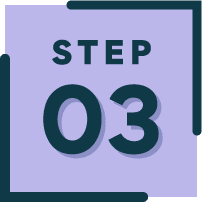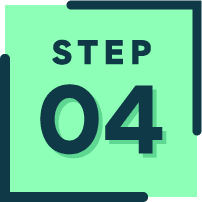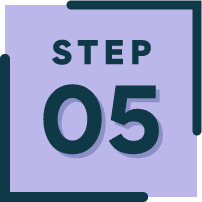What is a part and part mortgage?
A part and part mortgage is a product that combines the features of both a repayment mortgage and an interest-only mortgage. Therefore, your loan will be split into two parts.
The repayment portion of your loan is repaid over the term of the mortgage, with both the borrowed amount and interest being paid monthly.
The interest-only part of the mortgage only requires you to pay the interest each month, exactly like a standard interest-only mortgage.
At the end of the term, some of the borrowed amount will remain outstanding, meaning it will need to be paid. Lenders will require proof of a “repayment vehicle”, which is used to pay off the lump sum at the end of the term. A repayment vehicle could be an ISA or other investment plan.
As a simple example, imagine a £200,000 mortgage, with £120,000 on a repayment basis and £80,000 on interest-only.
Over the term of your mortgage, your monthly payments will cover the interest accruing on the entire outstanding debt. But it will only be paying back the segment of the mortgage that is on a repayment basis.
By the end of the agreed term, the repayment element (£120,000) will be fully paid off, and the interest-only element (£80,000) will still be owed at the end of the mortgage term.
What are the benefits of part and part mortgages?
You’ll be pleased to know that there are several benefits that come with these mortgages. Below we have highlighted some of the key ones to keep in mind before going ahead with a part and part mortgage product.
- Lower monthly payments – compared to a repayment mortgage, the monthly payments are typically lower, as you are only paying off a portion of the borrowed amount each month plus the interest on the loan.
- Flexibility – most lenders allow you to have control over the ratio between the repayment and interest-only part. This means the product can suit your financial goals as well as make it easier for you to budget.
- Potential for lower interest cost – if your lender allows you to, you can make overpayments on the interest-only part of your mortgage. In turn, reducing the interest you’ll pay in the long term.


Are there any drawbacks?
The most significant drawback is the need to have a plan in place to repay the outstanding loan amount on the interest-only part of the mortgage. If you are unable to do so, you may need to sell the property to raise the funds.
Lenders will usually require you to provide them with a feasible repayment plan that you are going to use to repay the remaining amount, as well as evidence to support this. Evidence can include financial statements like payslips or bank statements.
Another potential drawback of these mortgages is the potential for interest rate changes if you have a variable rate product. As the interest on both parts of the mortgages can change, either increasing or decreasing, your payments can reflect this. This may make it harder to budget.
We at IMC Mortgage Brokers are experts in assessing these factors to find you the most competitive and suitable product for your needs.
Can you get a part and part mortgage? - Mortgage lenders criteria
Like with any mortgage, part and part mortgage lenders require you to meet criteria in order to obtain a product. We have listed some of the boxes you must tick below, although this doesn’t mean there aren’t extra conditions that certain lenders may impose.
- Repayment vehicle – as mentioned above, lenders will need proof of a repayment plan that highlights how you will pay the remaining amount on the interest-only part of your mortgage.
- Deposit – as always, the more deposit you can provide, the better your chances being accepted, as well as unlocking competitive rates. On a part and part mortgage the minimum deposit we would recommend is 20% to 25%.
- Lenders could also restrict the percentage of the mortgage that is taken on an interest only basis. For example, if a property is valued at £150,000, a lender may restrict the interest only element of your mortgage to 50% of the value of the property (£75,000).
- They will then potentially allow you to borrow the rest of your mortgage on a repayment basis, capping your overall borrowing with both your interest only and repayment part of the mortgage to a maximum of 80% of the value of the property. Always check with a qualified adviser to ensure you get the correct advice.
- Type of property – as interest-only mortgages are viewed as ‘risker’ products, there is a standard of property that must be met. Certain properties, like ones in high-rise buildings with cladding for example, can be difficult to find lenders for.
- Credit history – a good credit history can make a big difference when applying for a mortgage. Proving you can manage borrowed finances shows a lender that you are a less risky borrower, making them inclined to offer you a more competitive deal.
If you’re unsure if you fit the criteria for a part and part mortgage, why not reach out today? Our team of expert advisors are on hand to discuss your circumstances and plans over a free initial consultation.
Who offers part and part mortgages?
The majority of mortgage lenders in the UK offer part and part mortgages, therefore it can be hard to know who to choose. Some of the lenders we have worked with include:
This is just a small number of lenders in the UK who offer these mortgages. To get a better understanding of what lender may suit you best, reach out today!

How do I get a part and part mortgage?
Part and part mortgages aren’t for everyone and the need for a repayment vehicle for the interest-only part cannot be stressed highly enough.
It’s also the case that not all lenders are willing to offer this kind of split mortgage. However, for some people they represent an ideal solution to their borrowing needs.
Consulting an expert mortgage broker from the start can be crucial as they will be able to navigate the market and support you throughout all the steps listed below:
Step by Step

Review your financial situation
Determine your income, expenses, and savings to understand how much you can afford to borrow. You should also look at your credit score to see if you are in a good position to obtain a mortgage.
Step 1
Discuss your needs with a mortgage advisor
A mortgage advisor can help you find the best part and part mortgage for your needs and guide you through the application process.
Step 2
Research lenders
Compare interest rates, terms, and fees from different lenders to find the most competitive deal. Consider factors such as the size of the repayment and interest-only parts, the interest rate, and any early repayment charges.
Step 3
Gather necessary documents
Prepare documents, such as proof of income, identity, address, and property valuation.
Step 4
Apply for a mortgage
Submit your application to the chosen lender.
Step 5
Underwriting process
The lender will assess your application and conduct credit checks.
Step 6
Mortgage offer
If your application is approved, you'll receive a mortgage offer. You will then need to carefully review the terms and conditions before accepting.
Step 7Navigating the mortgage market can be very complex, this is especially true if you’re looking for a more complex product like a part and part mortgage.
Getting the right support throughout your journey is key, so why not get in touch today?


